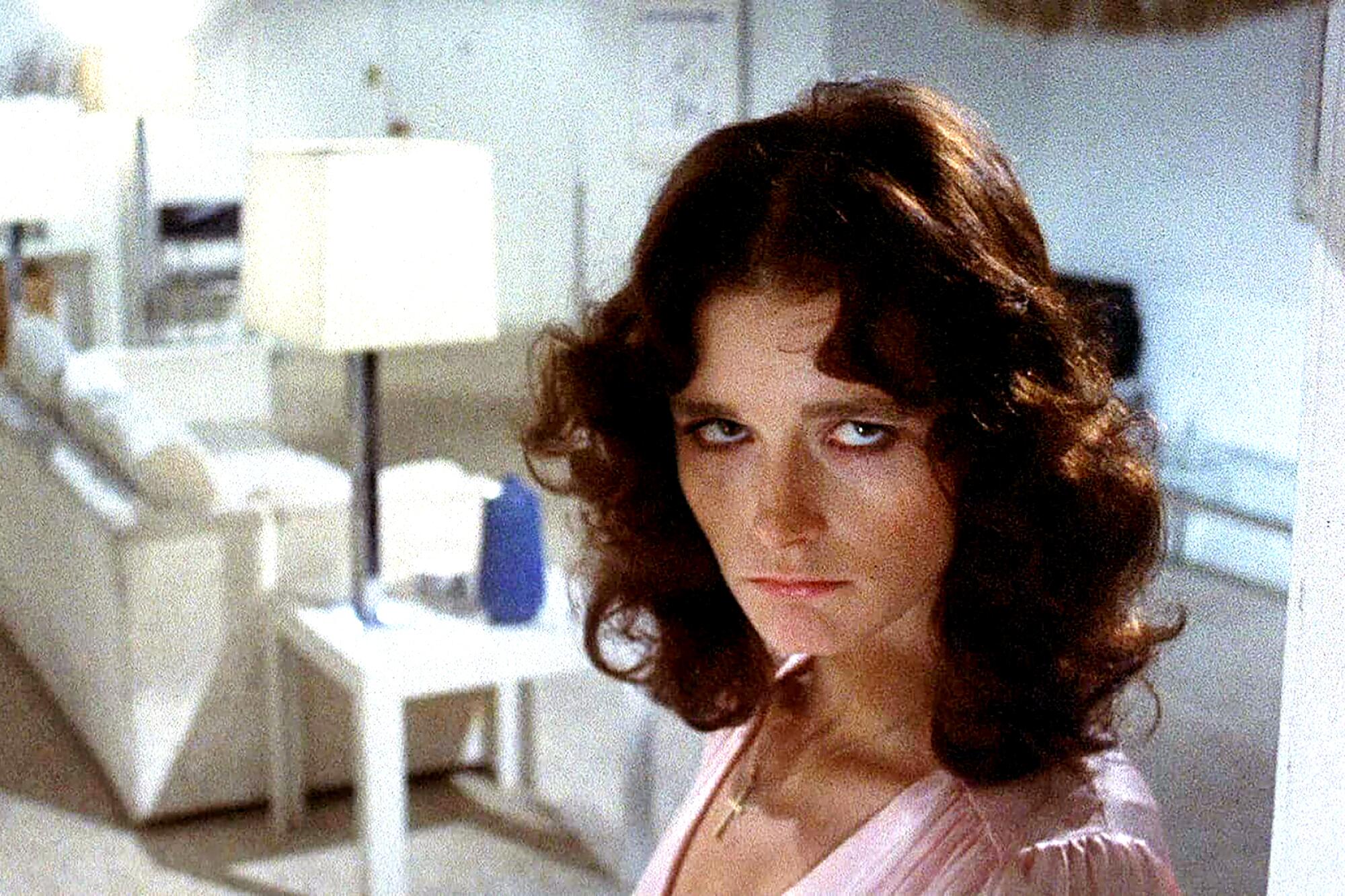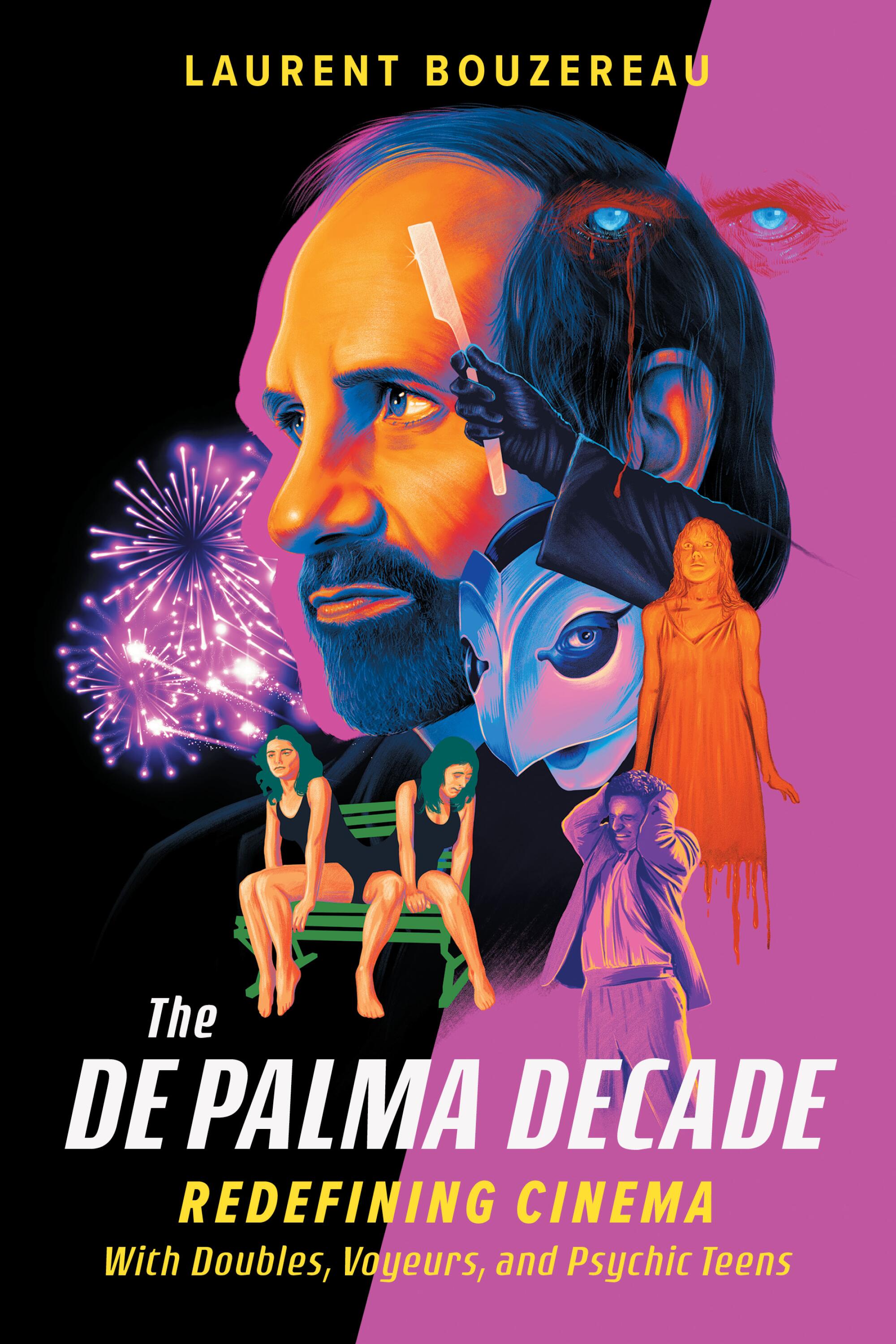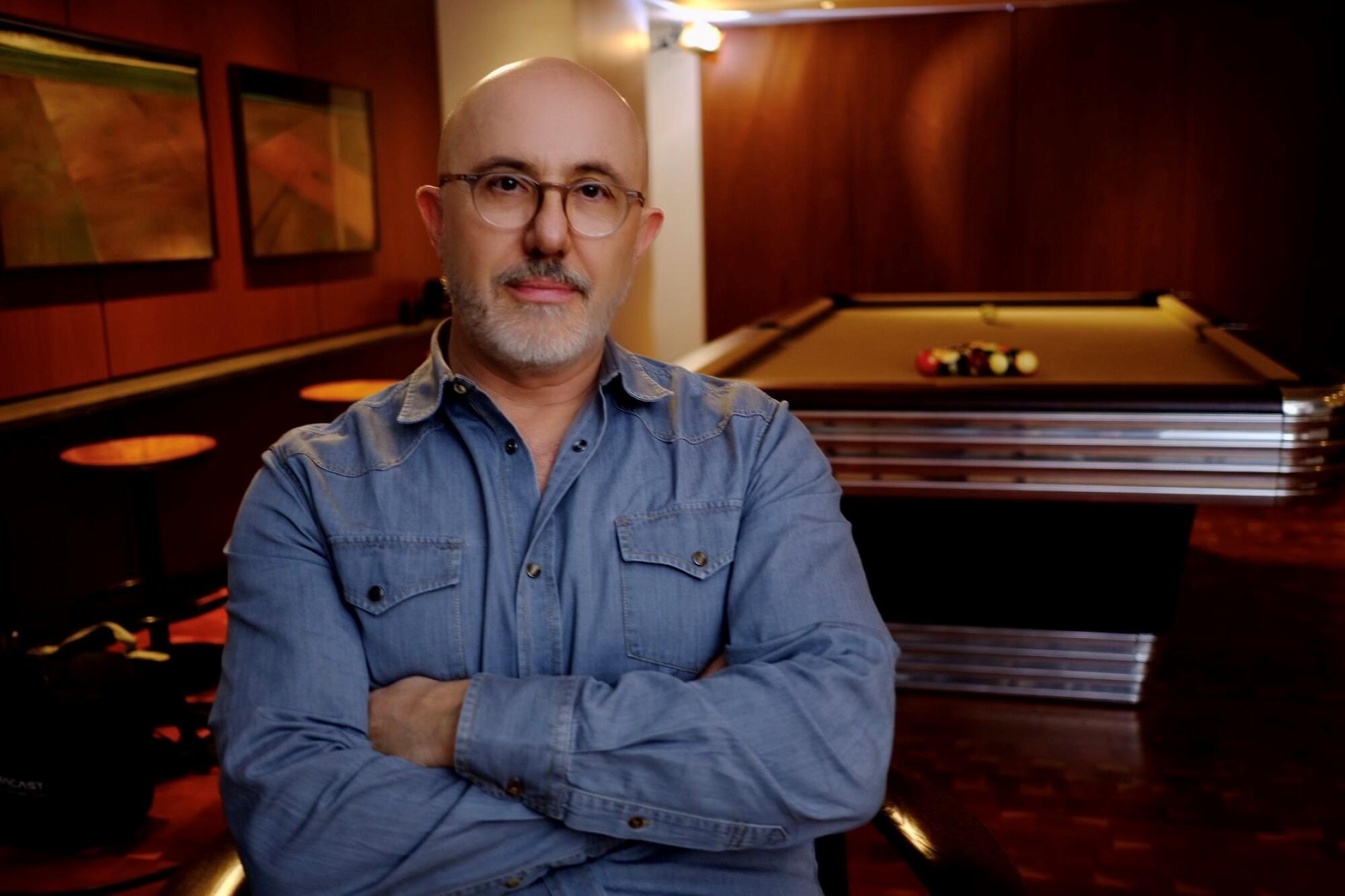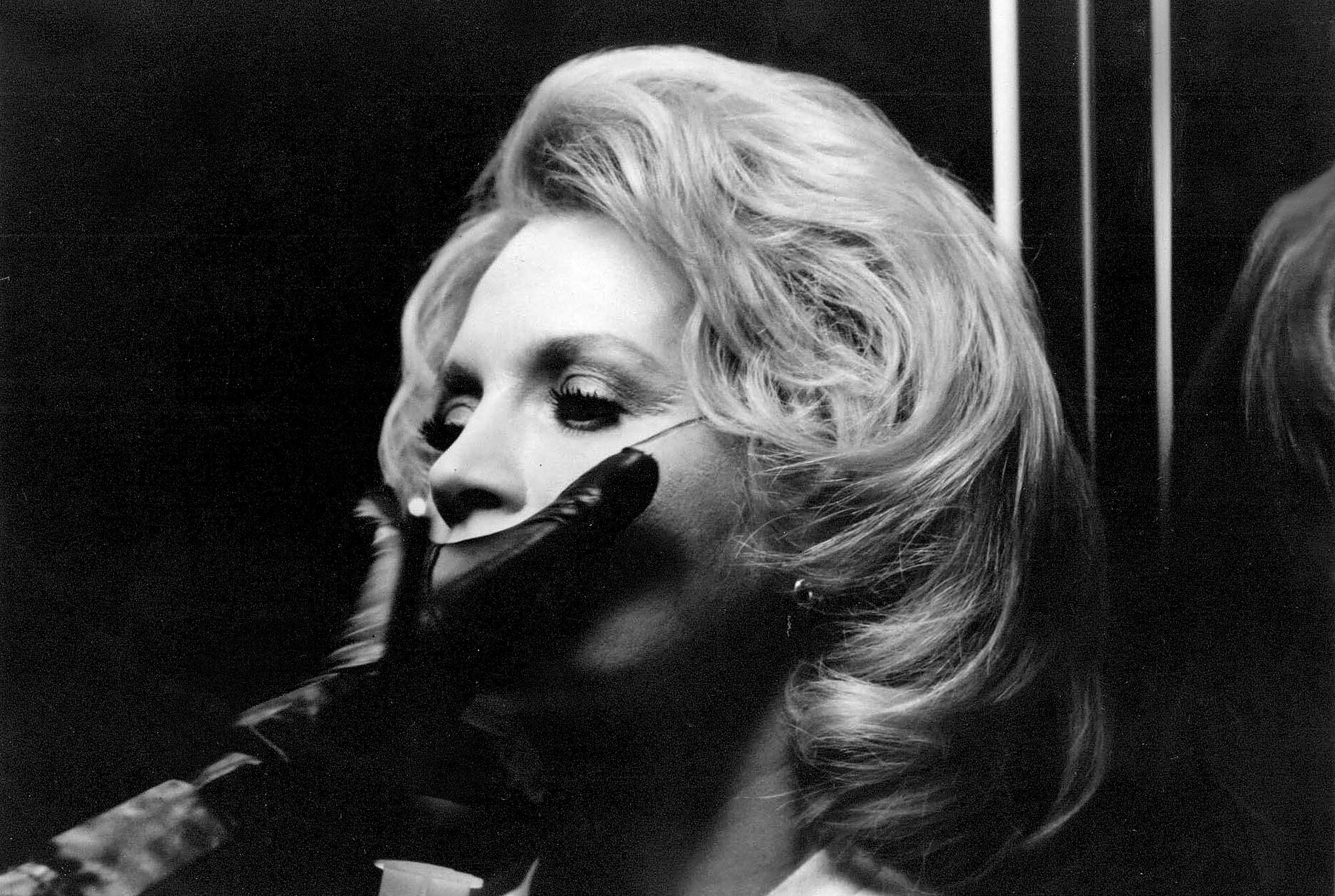
- Share via
Fall Preview Books
The De Palma Decade
By Laurent Bouzereau
Running Press: 320 pages, $30
If you buy books linked on our site, The Times may earn a commission from Bookshop.org, whose fees support independent bookstores.
Martin Scorsese made his name in the 1970s with dramas about characters living on the fringes of society. Francis Ford Coppola, seeking his own personal projects, almost reluctantly struck paydirt with the first two “Godfather” movies. George Lucas, of course, wrote and directed “Star Wars.” But none had a stranger, more expressive decade than Brian De Palma. With a string of sensational, graphic thrillers and horror movies, including “Sisters” (1972), “Carrie” (1976), “The Fury” (1978) and “Dressed to Kill” (1980), De Palma created his own film language — gory and operatic, kinky and depraved, laden with optical effects (find someone who looks at you the way De Palma looks at a split screen) and often comically indebted to Alfred Hitchcock. Many moviegoers loathe De Palma. Many more love him. But very few find him boring.
And yet, “The De Palma Decade,” the new book out now by author and filmmaker Laurent Bouzereau, somehow makes him seem just that. This is less a critical consideration or biography so much as, to borrow the title of the unnerving Frederick Exley novel, a fan’s notes. Bouzereau, who made the recent (and excellent) Faye Dunaway documentary, “Faye,” really, really likes De Palma. He refers to a scene in “Sisters” as “pure cinematic genius.” Michael Caine’s performance as the transgender psychiatrist/murderer in “Dressed to Kill” is “predictably amazing and daring”; that film’s intricately constructed cat-and-mouse seduction sequence at the Metropolitan Museum of Art — the interiors were actually shot at the Philadelphia Museum of Art — is “simply mesmerizing and bewitching.” John Farris’ source novel for “The Fury” is “fascinating.” Even more, er, fascinating is that such anodyne language can be used to describe a filmmaker who has always been determined to jolt the viewer out of any sense of complacency.

“The De Palma Decade” unfolds as a series of oral histories plus copious plot summary, featuring interviews with De Palma — or, as Bouzereau refers to him near the book’s beginning, “Brian” — and an array of his cast and crew members through the years. Walking through these pages you’ll find the likes of Amy Irving (“Carrie,” “The Fury”), film editor Paul Hirsch (who won an Oscar for cutting “Star Wars”) and Chicago theater veteran Dennis Franz, who, as De Palma devotees know, warmed up for his signature work in “Hill Street Blues” and “NYPD Blue” by playing cops in “The Fury” and, most delightfully, “Dressed to Kill.”
Bouzereau did some reporting, and some of his subjects actually have something to say. De Palma talks about the importance of music in setting the tone for his long, dialogue-free scenes (like that museum sequence). Hirsch riffs on the different approaches taken by “The Fury” stars Kirk Douglas and John Cassavetes: Douglas, who attacked his role with vim, came in hot but fizzled in later takes, while it took Cassavetes, who often booked acting jobs to help pay for the movies he wanted to make himself, about 10 takes to get loose. Nestled between the platitudes of “The De Palma Decade” are some genuine insights into the filmmaking process.
Few American filmmakers have been as critically polarizing, or provoked as much critical re-evaluation over the years, as Brian De Palma.
But the author’s unabashed adoration of De Palma can be a hindrance to deeper understanding. Bouzereau touches on the primary controversy surrounding “Dressed to Kill,” that “De Palma conflates transness with mental illness and homicidal behavior.” Caine’s character does indeed come across as a trans person whose conflicted identity leads him to kill. Here we go. Bouzereau is going to ask his hero how he views all of this now. And then … he doesn’t. Instead, De Palma says a little about how his screenplay for “Cruising,” a movie ultimately written and directed by William Friedkin, led to some of his ideas for “Dressed to Kill.” With that, the author lets him skate, onto the next platitude. Early on, Bouzereau writes that he has “no intention here to make a social treaty or statement or defend the controversial aspects of De Palma’s work” (perhaps he means “treatise,” not “treaty”). Fair enough. But the idea of handling such a gleeful provocateur with kid gloves seems to somehow miss the point of De Palma’s work.

The book covers seven films, organized thematically into three sections: The Split (“Sisters” and “Dressed to Kill”), The Power (“Carrie” and “The Fury”) and The Tragedies (“Phantom of the Paradise,” “Obsession” and “Blow Out”). “The Split,” of course, has multiple meanings for De Palma, who used split screens not merely as an aesthetic exercise: Like many an artist of the macabre, going back at least to Edgar Allan Poe, he also made bloody hay out of the theme of doubling, and the terror and instability inherent to the idea of a divided self.
There’s something very sad about referring to Bruce Willis in the past tense, or the arrival of a book that serves as a career retrospective.
By the time he made “Sisters,” in 1972, De Palma had already done a few scrappy counterculture features, including “Greetings” (1968), “The Wedding Party” (1969) and “Hi, Mom!” (1970). But “Sisters,” a proper freakout starring Margot Kidder, playing conjoined twins, is the first of what we now think of as a De Palma movie: a psychosexual nightmare with madman instincts. Viewed with the hindsight of 52 years, it feels of a piece with other rule-breaking, devil-may-care horror films of the period, including George Romero’s “Night of the Living Dead” (1968), Wes Craven’s “The Last House on the Left” (1972) and David Cronenberg’s “Shivers” (1975).
It is, in other words, the real deal. Paradoxically, it also marks De Palma’s true entry into the sincerest form of flattery, the imitation game. Bouzereau starts his defense early, asking, “Is it fair to label De Palma a copycat? Isn’t he, rather, the legitimate heir to the Hitchcock kingdom?” He may, in fact, be both.

De Palma’s slavish emulation of Hitchcock runs through numerous films, and with notable specificity. Someone witnesses a murder in the apartment across the way, a la “Rear Window” (“Sisters,” “Body Double”). A blond star is murdered in a movie’s first act, as in “Psycho” (“Dressed to Kill,” which also throws in a couple of shower scenes and an obtuse expert explaining why a man dresses as a woman). He bows to “Vertigo” on multiple occasions, including “Blow Out” (man suffers the same tragedy twice, unable to prevent murders he has indirectly enabled) and, more directly, “Obsession,” about a grief-stricken man who reconstructs a lost lover. In these movies De Palma is almost like a hip-hop producer, mixing samples of different songs to create a new whole. He is director as collagist.
By focusing on De Palma’s ‘70s output (“Blow Out” and “Dressed to Kill” are technically early-‘80s movies, but exact decades can be imprecise markers of an artist’s thematic output), the book opts to pull up short of the director’s next, in many ways more eclectic, period. The ‘80s brought, among others, the opulence of “Scarface” (the subject of a pair of recent books, by Glenn Kenny and Nat Segaloff), the undiluted sleaze of “Body Double,” the mainstream success of “The Untouchables” and the underrecognized Vietnam War drama “Casualties of War.” If you seek a more comprehensive study, check out Noah Baumbach and Jake Paltrow’s fine 2015 documentary “De Palma.” In “The De Palma Decade,” the filmmaker gets a more precise spotlight. And he couldn’t have asked for a more devoted fan to shine it.
More to Read
Sign up for our Book Club newsletter
Get the latest news, events and more from the Los Angeles Times Book Club, and help us get L.A. reading and talking.
You may occasionally receive promotional content from the Los Angeles Times.












